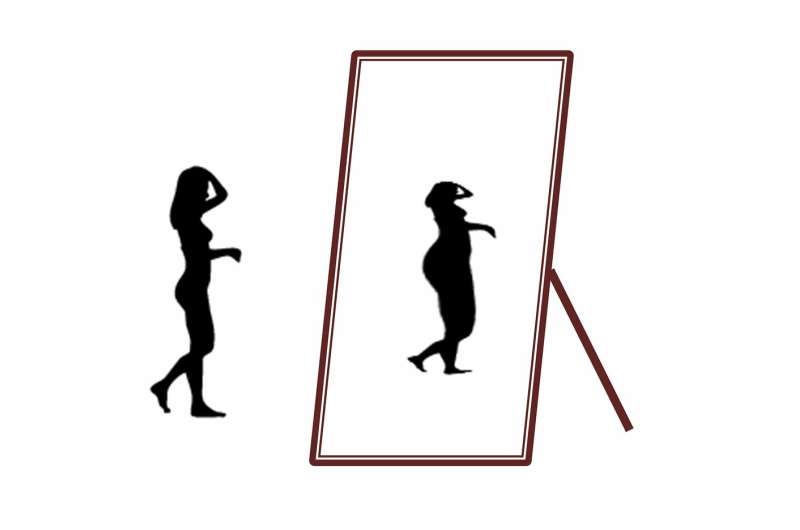Adolescent South Africans increasingly struggle with eating disorders, unhealthy eating attitudes and body image issues

Anorexia has traditionally been seen as a disease of the privileged. Most people believed that if you have anorexia, it meant you had an obsession with designer clothes that required a whittled waist. Who would shun food, after all, when they didn't even have enough of it to eat?
More recent research has shown that eating disorders are a much more complex issue that have very little to do with vanity – quite the opposite. But, in South Africa at least, it remained an affliction of an urban life.
As the country transitioned into democracy in the early 1990s, and racial integration increased across society, research indicated that there would be increasing numbers of eating disorder sufferers within the black community.
Early eating attitudes in city settings
Professor Christopher Szabo, Head of Psychiatry at Wits, conducted a cross-cultural study of eating attitudes in adolescent South African girls in 1996. The aim was to demonstrate that setting, and not race or ethnic group, has an important influence on eating attitudes.
"Within the South African context such data is important in terms of dispelling notions of racial exclusivity regarding the risk for the development of eating disorders," said Szabo at the time.
The study was conducted among 1,353 learners from all-girl private schools, as privately funded schools were one specific area of racial integration at the time, but were viewed as institutions dominated by Western values. 37.5 percent of the black girls who took part in the study showed potentially pathological eating attitudes, which suggested an emerging phenomenon.
"Today, there is an increasing awareness of the impact of urbanisation on mental illness. Earlier data demonstrated an urban-rural distinction in eating attitudes and this remains as relevant today as in our 1996 study," says Szabo.
Country-living culture clash
A 2016 study by Lisa Micklesfield from the South African Medical Research Council/Wits Developmental Pathways for Health Research Unit (DPHRU), among adolescent girls and boys in rural South Africa, showed that 83 percent of girls in rural settings are dissatisfied with their bodies. In contrast with urban attitudes, the girls in the rural study wanted to be either thinner or fatter. Although the majority wanted to be thinner, those who were overweight wanted to be fatter. This shows how the adoption of Western ideals is in conflict with traditional norms.
"Culturally, bigger is better in this demographic," says Professor Shane Norris, Director of the DPHRU and founder of ACTION, (the African Centre for Obesity Prevention), who worked on this study. "For some of these young women, bigger remains the ideal. But several studies have shown that eating disorders like anorexia and bulimia are increasing among black females as they acculturate Western messages and ideals of thinness."
This study confirmed that eating disorders and disordered eating attitudes, but also obesity, are increasing among black women and girls – in both urban and rural settings.
This was also the first local study to look into both female and male adolescents' attitude towards different body shapes. The majority of both boys and girls chose words like "unhappy" and "weak" to describe underweight silhouettes.
For the overweight silhouettes, the results were much more conflicting and included "more respect", "strongest" and "happiest" – but also "worst" and "less respect". Interestingly, the overweight females chose silhouettes with a lower Body Mass Index (BMI) than theirs even when they wanted to be fatter.
"Body image concerns are central to eating disorders," says Szabo. "Eating disorders are powerful indicators of distress that go beyond food and body issues alone. Every sufferer has an individual story. Hence, eating disorders are complex conditions to both understand and treat."
A menu of bite sized changes
All the studies point to a need for policy intervention, such as school-based nutrition and physical activity programmes, to address a healthy body size among South African adolescents. Norris says young black females are in a particularly vulnerable position now when it comes to eating attitudes.
"In rural areas, older generations value a larger shape, but younger generations have a different view. Unfortunately, they're reliant on the family decision makers. And even when they want to live healthy lifestyles, their ability to do so is determined by other factors, like income."
Family factors also affect eating and attitudes to food. Norris worked on another study, published in 2018, which showed that eating the main meal with family, whether on some days or almost every day, and irregular breakfasts on weekdays, were all associated with an increased risk of overweight and obesity in this group.
"There's no silver bullet to make everyone desire a healthy body shape," says Norris. "In the end, it comes down to increasing awareness and enabling people to live healthier lives. We need to get the message out there that either extreme – whether too thin or too fat – is unhealthy. But being healthy doesn't have to mean a drastic, expensive change. It's about small changes, like being less sedentary, consuming fewer sugar-sweetened beverages and energy-dense convenient snacks and food, and eating more vegetables. Every little bit helps."
More information: Szabo CP, Allwood CW. A cross-cultural study of eating attitudes in adolescent South African females. World Psychiatry. 2004;3(1):41-4. www.ncbi.nlm.nih.gov/pmc/articles/PMC1414663/
Modiehi Sedibe et al. Dietary Habits and Eating Practices and Their Association with Overweight and Obesity in Rural and Urban Black South African Adolescents, Nutrients (2018). DOI: 10.3390/nu10020145
















